Ginger is a popular ingredient for dishes and serves as a great choice when it comes to juicing. However, many juicing enthusiasts are still unsure if they need to peel ginger before juicing or not.
There are different opinions on that point, which is why this simple from the first side questions generates so much confusion. Our article will separate myths from facts and give a definite answer to this controversial question.
1. Do you peel ginger before juicing?
If you are asking yourself “Do I have to peel ginger before juicing? “, then the short answer to that question is:
Even though peeling ginger before juicing is not mandatory, it is still recommended to do so to ensure that the product is free from pesticides, soil, dust or bacterias. If you decide to omit that step, then at least make sure you thoroughly wash it under cold water.
The main argument for peeling ginger skin is the fact that the skin has not only protective function but also accumulates dirt. On the other side, the skin contains healthy substances and microelements. Besides, ginger’s thin skin closely adheres to the flesh, making it difficult to peel without losing parts of the ginger inside. That’s why you need to know how to peel ginger properly, in order to enjoy and benefit from it entirely.
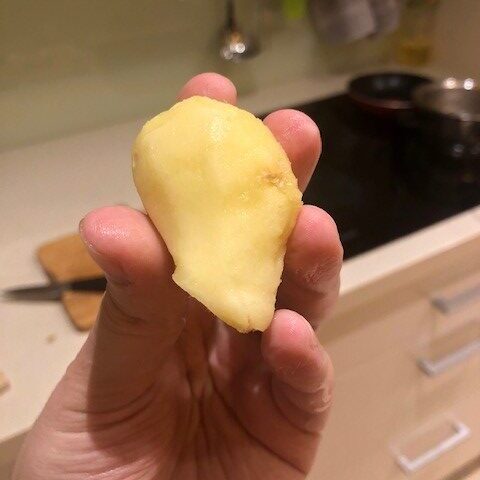
To peel the ginger root or not also depends on what you are planning to use it for. If you are going to use it in a dish, it is recommended to peel the ginger. Otherwise, the skin will look like dirt and will be completely out of healthy substances after cooking. If you are going to use it for tea or any other refreshing drink, then peeling the root is unnecessary, washing it under cold water will do the trick.
Speaking about juicing – peeling is a best practice, but not a mandatory step.
Tip: Do not peel the whole ginger if you are not going to use it immediately – it will get dry and lose all healthy substances.
2. How to peel ginger properly?
Regardless of which method of removing the skin you choose, the first thing to do is wash it thoroughly under cold water. After that, cut off that part of the ginger root you will use for your juice. Do not peel the whole ginger in advance; unused peeled ginger will not stay fresh long. That’s why you need to cut off the exact amount you will need and peel that part only.
Now, let’s take a look at several ways of peeling the ginger root.
1) A spoon
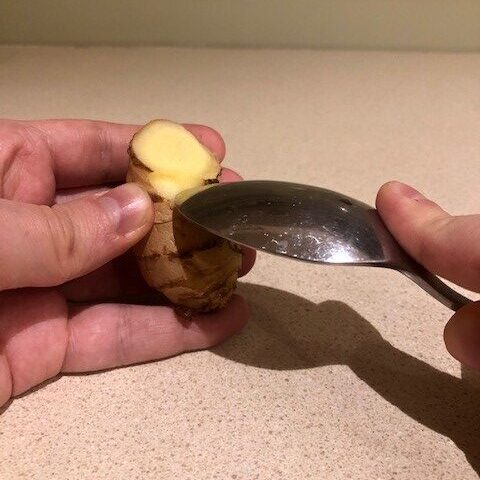
Surprisingly, but because of the ginger root’s uneven form, the most convenient tool for peeling its skin is not a knife or a grader but… A spoon. Shave the skin with the spoon moving it in one direction, don’t move it back and forth. Do not press it very hard to make sure you peel only the skin and not the inside. The downside of this way of peeling ginger is that it is efficient only with the fresh and ripe ginger.
Pros: Because of the curvy ginger shape, the most comfortable way to peel it
Cons: Effective only with the fresh ginger root
2) Metal sponge
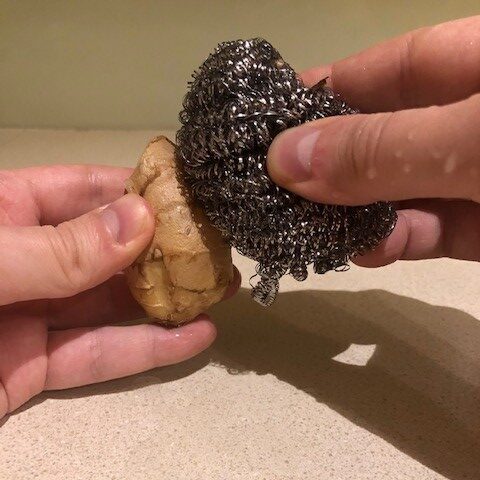
Take a new, unused metal sponge for cleaning pots and rub the root with it, moving it in one direction. Do not press it hard. At first, use a minimum power, if necessary, increase the pressure. Make sure to scrub off the skin only, without the inside.
Pros: Effective and fast way to peel
Cons: Need to use a new sponge all the time, to make sure it doesn’t contain the pieces of old food etc.
3) A knife
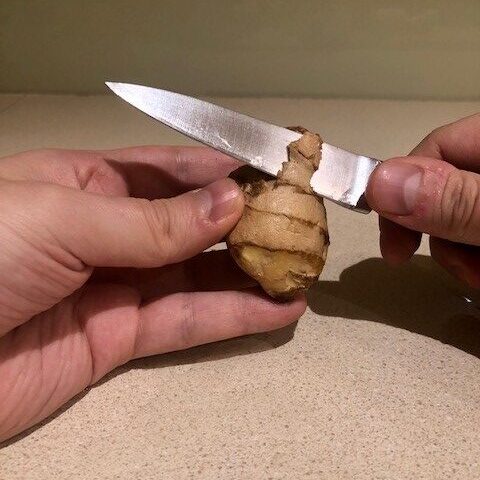
Using a knife is an option if the root is old and its peel is hard, and you can’t remove it with the spoon. However, there is also higher risk to cut off some ginger flesh together with the peel.
Pros: Effective with hard skin
Cons: risk to cut off ginger flesh
4) Vegetable scraper
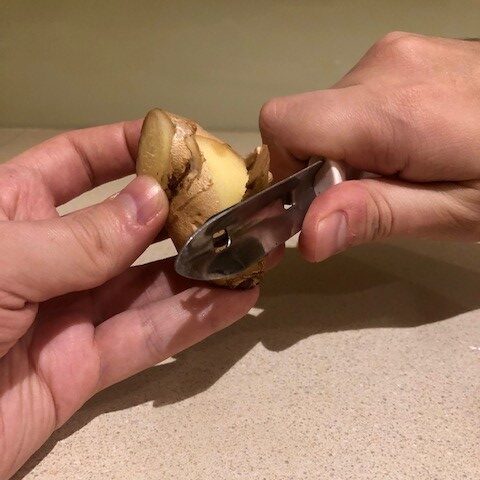
Easy to use tool suitable for peeling ginger root. Maybe less effective with too curvy roots, it can be challenging to reach and peel all the ginger parts in such cases.
Pros: Fast, easy to use
Cons: Can be difficult to reach all the parts of the root
5) A grater
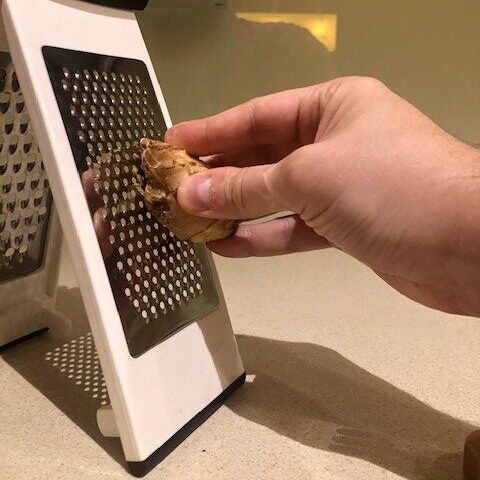
The least convenient option, however bearing in mind various situations, is worth adding here. If you decide to use a grater, it is recommended to use the small grater and move the ginger in one direction while peeling.
Pros: Can be used in case you don’t have other tools
Cons: Less comfortable than other options
Tip: In stores, you can find already peeled ginger slices which can be used for tea and so on. Despite its convenience of use, it is better to avoid buying it. Even if the product is vacuumed, it unlikely has any healthy substances or desired flavour.
3. Best Ginger Juicer
Speaking about juicer types for ginger, it is better to use so-called masticating instead of a centrifugal juicer. First of all, it’s mechanism is designed to squeeze the maximum liquid from any kind of product, including leaves or roots. Secondly, such a juicer’s slow operation preserves all the product’s healthy substances, which is what we want when juicing ginger.
The excellent option for this would be Omega NC800HDS .
You can also use a centrifugal juicer for ginger. These kinds of juicers operate faster, but it is important to note that their powerful motors ( speed is around 1000-1300 RPM ) generate heat which can kill healthy substances in your juice.
If you want to learn more about juicers and best options available on the market, in these articles we have a great overview of the top juicers:
Conclusion
Peeling ginger before juicing doesn’t make much difference in terms of taste, but the skin may contain dirt or pesticides. That is why we do recommend to take additional 30 seconds to wash and peel the root before juicing.
Liked the article? Share it!

Recent Comments